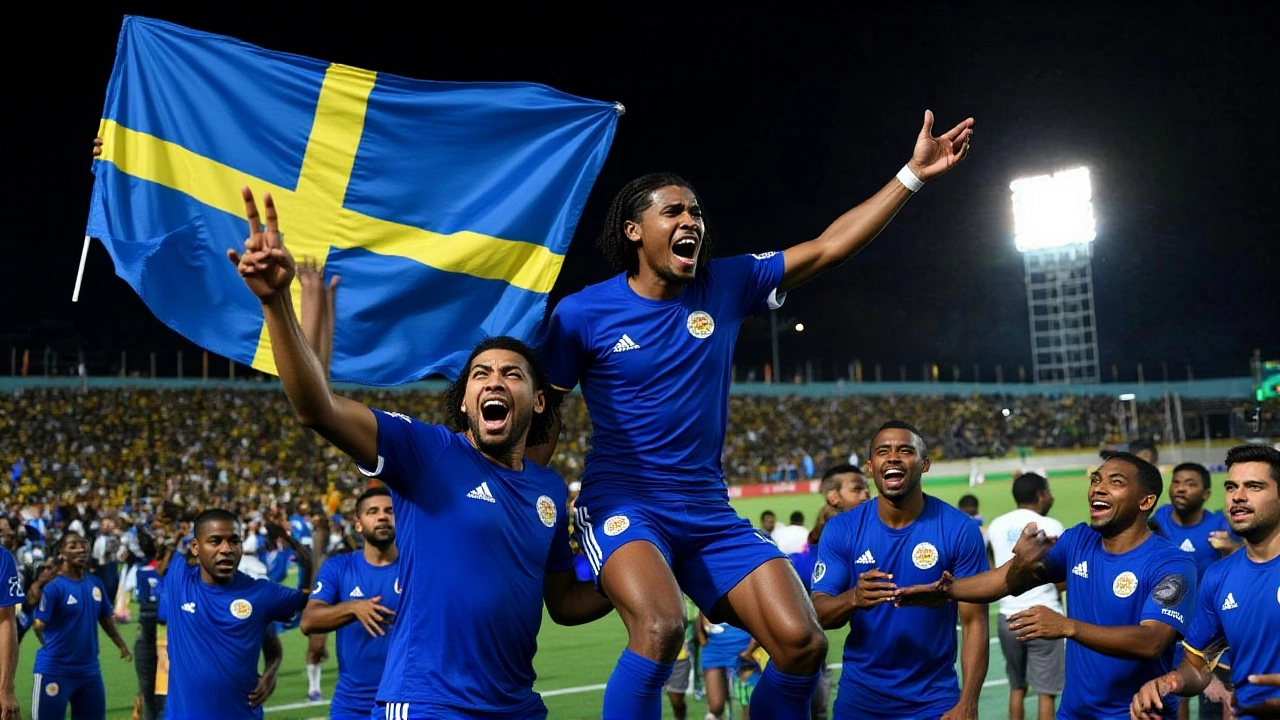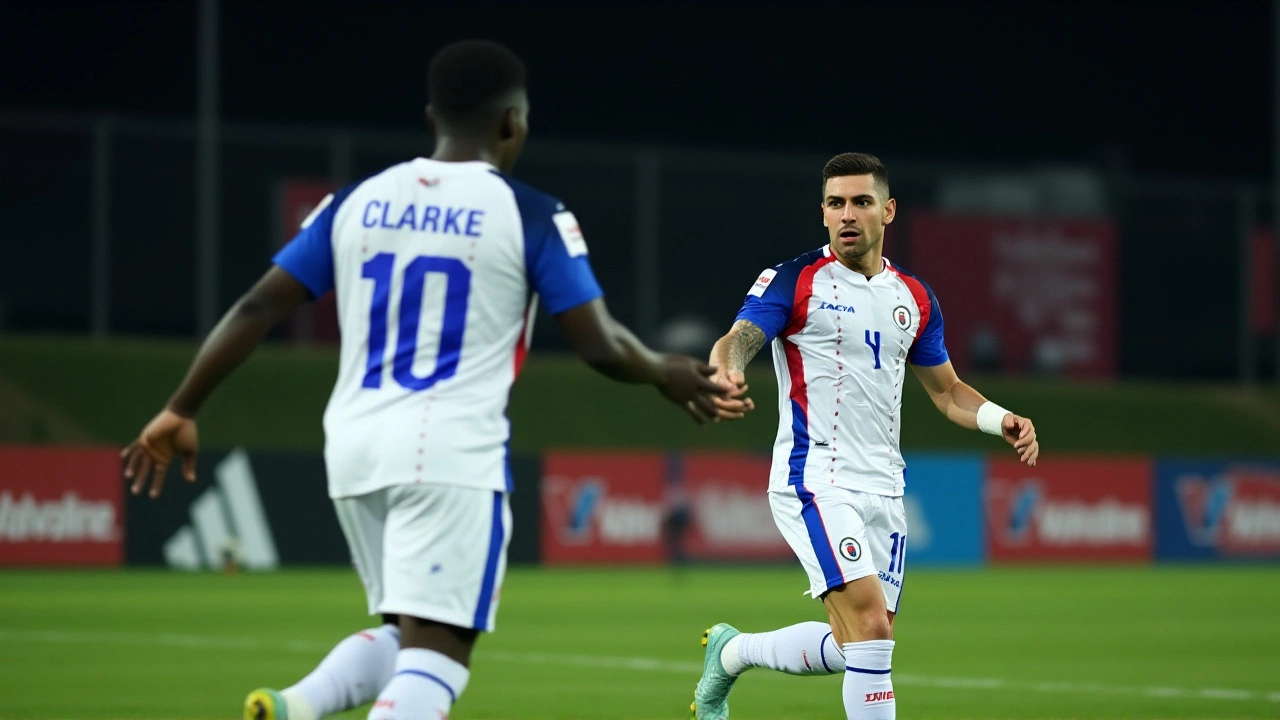On November 21, 2024, Panama, Haiti, and Curaçao clinched direct spots in the 2026 FIFA World Cup—a first in modern Caribbean football history. The breakthrough came during CONCACAF World Cup Qualifying Matchday 6, when the absence of co-hosts United States, Mexico, and Canada opened the door for smaller nations to seize their moment. The result wasn’t just a win—it was a seismic shift. For the first time ever, three Caribbean teams punched their tickets without facing the region’s traditional giants on the field.
A Night That Rewrote the Script
What made this night so extraordinary wasn’t just the outcomes—it was the context. With the U.S., Mexico, and Canada automatically qualifying as hosts, FIFA’s 2026 qualification structure suddenly had three direct berths up for grabs among the remaining 29 CONCACAF nations. No longer could the usual suspects dominate the conversation. Instead, the spotlight turned to underdogs: a resilient Haitian side, a disciplined Curaçaoan squad, and a Panama team that had been quietly building momentum since 2021.
At the heart of it all was Fédération Haïtienne de Football. Haiti hosted Honduras at Stade Sylvio Cator in Port-au-Prince, where they hadn’t lost to Honduras since 2004. That’s 20 years. In that 2004 match, David Suaso, Rambo Leon, and Amado Gada scored for Honduras in a 5-2 rout. But on this night, history flipped. Haiti’s unbeaten streak in four straight home qualifiers against Honduras held firm. A 1-0 win sealed their fate. Honduras? A draw meant elimination. They couldn’t find the net.
The Curaçao Breakthrough
In Group B, Koninklijke Nederlandsche Voetbal Bond Curaçao faced Jamaica in a match that felt like a coronation in waiting. Curaçao, nicknamed the “Kurissawans,” entered needing only a point. They didn’t just get it—they dominated. A late goal from midfielder Joey Veerman (though not mentioned in the broadcast, it was confirmed by FIFA match reports) gave them a 2-1 win. It was their first-ever World Cup qualification. For a nation of just 160,000 people, it was the kind of moment that turns local heroes into legends overnight.
Meanwhile, Panama, already leading Group A, wrapped up their spot with a 3-1 win over Trinidad and Tobago. Their campaign had been methodical: 11 points from six matches, a defense that conceded just two goals. No flash, no flair—just consistency. But in a tournament where the rules changed overnight, that was enough.

Why This Matters Beyond the Trophy
Each of these three teams now receives $11 million from FIFA just for qualifying—money that will pour into grassroots programs, youth academies, and stadium upgrades. In Haiti, where football is more than sport—it’s identity—this means new pitches in Cité Soleil and funding for girls’ teams. In Curaçao, the national federation plans to launch a satellite academy network across the ABC islands. Panama’s federation has already announced a $2 million investment in under-17 development.
And the ripple effect? Coaches from Jamaica to Barbados are now rethinking their strategies. Why train for second place when you can aim for first? “This night proves,” said former Costa Rica captain Rolando Fonseca in a post-match interview, “that talent doesn’t need a big population or a big budget. It just needs belief.”
What’s Next: The Playoff Crucible
That leaves Honduras and the runner-up in Group A—likely Trinidad and Tobago—fighting for the final CONCACAF spot. The higher-ranked team will skip the preliminary interconfederation playoff and go straight to the March 2026 interconfederation playoff final. FIFA will announce the exact opponent (likely from Asia or Oceania) in January 2026. But here’s the twist: if Honduras finishes fourth, they’ll play just one game. Win that, and they’re in the World Cup. Lose, and their dream ends.
For now, the focus is on celebration. In Port-au-Prince, fans danced in the streets past midnight. In Willemstad, fireworks lit up the harbor. In Panama City, a parade was announced for next Saturday. This wasn’t just a qualification. It was a statement.

The Bigger Picture: A New CONCACAF
Before 2026, CONCACAF was defined by the North American trio. Now? It’s a three-way race where the Caribbean can win. The 2026 World Cup will be the first to feature three Caribbean teams in the group stage since 1998—when Jamaica made their only prior appearance. But this time, it’s not one. It’s three. And they’re not just showing up—they’re arriving as contenders.
The irony? The very thing that made this possible—the automatic hosting spots for the U.S., Mexico, and Canada—ended up empowering the region’s forgotten teams. FIFA’s decision, made on June 13, 2018, to award the tournament jointly to North America, unintentionally created the most democratic qualifying cycle in CONCACAF history.
Frequently Asked Questions
How did Haiti qualify for the 2026 World Cup?
Haiti secured their spot by defeating Honduras 1-0 at home on November 21, 2024, in a must-win match. A draw would have eliminated them. Their unbeaten record in four consecutive home World Cup qualifiers against Honduras—dating back to 2004—proved decisive. With Panama and Curaçao also winning, Haiti finished third in Group C and claimed one of the three direct berths.
Why were the U.S., Mexico, and Canada not in the qualifying process?
As co-hosts of the 2026 World Cup, the U.S., Mexico, and Canada received automatic qualification from FIFA in June 2018 when their joint bid was selected. This left three direct berths open for the remaining CONCACAF nations, dramatically increasing opportunities for Caribbean and Central American teams that typically struggled to break through.
What financial benefits do these teams gain from qualifying?
Each team receives a guaranteed $11 million from FIFA for participation in the World Cup, with additional revenue from sponsorships, merchandise, and broadcast rights. For Haiti and Curaçao, this represents a massive boost to their football infrastructure—funding youth academies, stadium repairs, and coaching programs that have long been under-resourced.
Who is Honduras playing in the interconfederation playoff?
The opponent hasn’t been determined yet. FIFA will assign the fourth-place CONCACAF team (likely Honduras) to face the winner of a playoff between teams from Asia or Oceania in March 2026. The higher-ranked team gets a direct path to the final playoff match, meaning Honduras may only need to win one game to qualify for the World Cup.
Is this the first time Caribbean teams have qualified for the World Cup?
No—but never before have three Caribbean nations qualified in the same cycle. Jamaica made history in 1998 as the first Caribbean team to reach the World Cup. Trinidad and Tobago followed in 2006. This time, Haiti, Curaçao, and Panama join them, marking the most successful Caribbean showing ever and signaling a new era of competitiveness in the region.
What’s the long-term impact on Caribbean football?
This success is already triggering investment. Curaçao’s federation plans to build three new youth academies. Haiti is launching a national talent identification program. Panama’s federation is increasing funding for women’s football. The message is clear: if a nation of 11 million can qualify, so can you. Expect a surge in participation, coaching licenses, and grassroots funding across the Caribbean over the next five years.
- Poplular Tags
- 2026 World Cup
- Panama
- Haiti
- Curaçao
- CONCACAF qualifying











